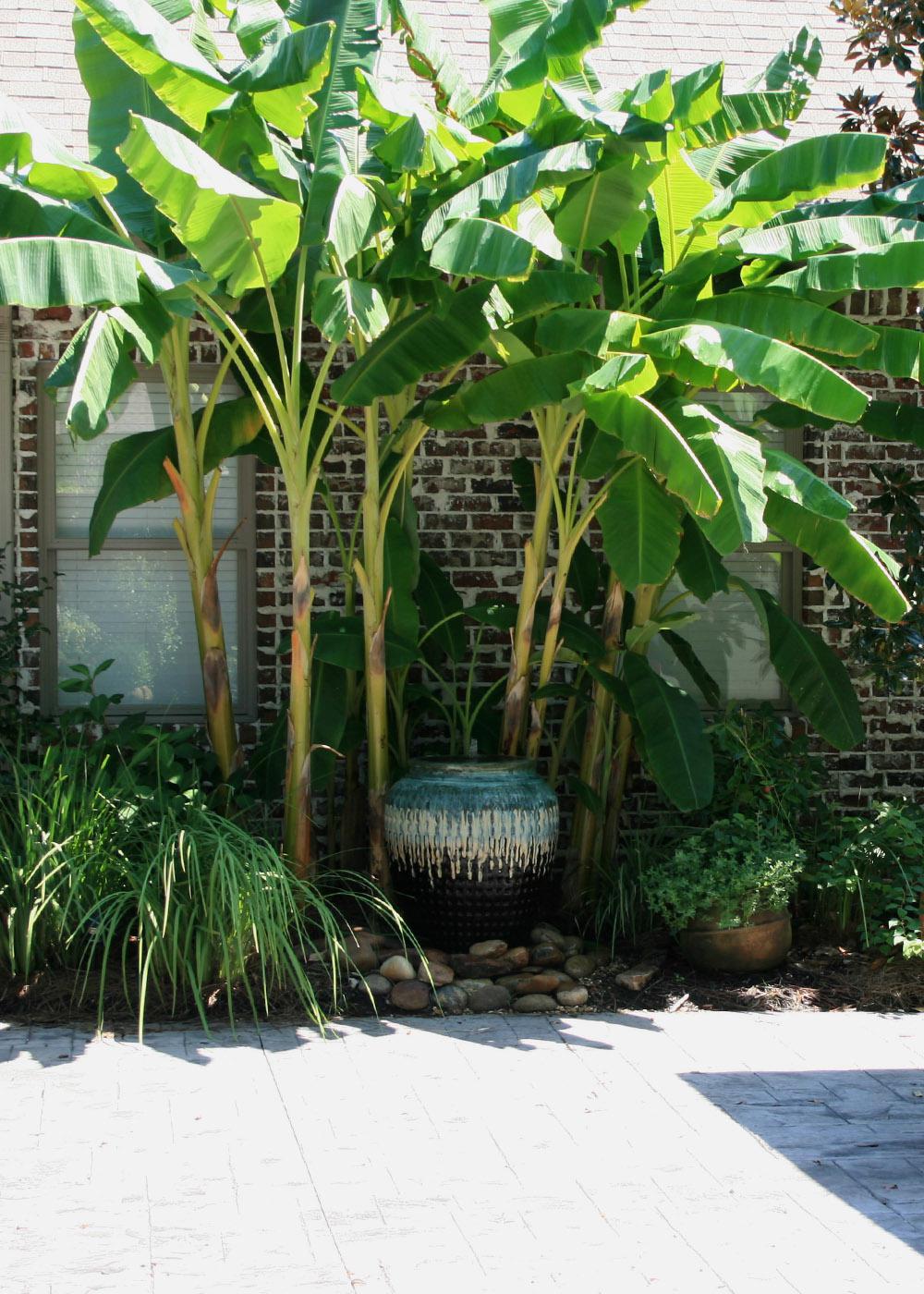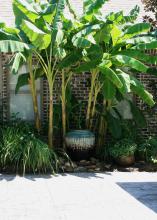Information Possibly Outdated
The information presented on this page was originally released on August 17, 2011. It may not be outdated, but please search our site for more current information. If you plan to quote or reference this information in a publication, please check with the Extension specialist or author before proceeding.
Colorful bananas can thrive across the state
A lot of gardeners are interested in creating a tropical feeling around their homes, and one of the easiest ways to do this is to add banana plants either in the landscape or in large containers.
If you’re about to quit reading because you think bananas can only be grown in coastal Mississippi and you live elsewhere, stick with me. I hope I can change your mind by describing some of the selections that are hardy for all landscapes in Mississippi.
A good all-around choice, especially for the beginning gardener, is the Japanese Fiber banana. This is one of the easiest banana plants to grow, and it is cold hardy all across Mississippi. Its coarse-textured foliage is a bright green, and the plant can reach up to 10 feet tall. Even if it only gets to 5 feet tall, this plant has a presence in the landscape.
While the tropical green we commonly associate with bananas is relaxing, there are other colors in the banana palette.
One is Black Thai, a wonderful banana that has shown good cold-hardiness. This banana has a really dark, deep purple stem and petiole, and the foliage is a dark green. It needs a large space in the landscape, as some specimens reach more than 15 feet tall.
One of the prettiest bananas is the selection Siam Ruby. The rich, burgundy color of the stem is stunning, and the irregular variegation of bright green on the burgundy foliage makes it seem to shimmer. Siam Ruby usually reaches just 4 to 5 feet tall. This plant is suited to zones 8 and 9, where it will die back to the ground each winter.
Grow bananas in full sun in well-drained soil. Soil drainage is a critical factor, as many selections are not as hardy in soils that remain wet during the winter months. Bananas perform best in raised beds. The soil needs to be rich in organic matter, so amend your planting beds with 3 to 4 inches of quality compost, and work it deeply into the soil.
When growing bananas in containers, never use the soil from your garden, no matter how good it is. Always use a quality commercial potting mix. These mixes are lightweight and have good drainage. For the container itself, choose one that holds at least 15 gallons so it will remain in proportion to the plant itself.
Bananas need consistent moisture, so be sure to irrigate yours on a regular basis, especially in dry weather. Keeping a heavy layer of mulch is critical in maintaining soil moisture for optimum growth.
Bananas are heavy feeders, so you must keep the soil nutrition at adequate levels. In the landscape, use a balanced, slow-release fertilizer such as a 14-14-14 lightly scratched in around each plant. For containers, I recommend you use a water-soluble fertilizer weekly in your regular watering schedule.
Bananas’ coarse-textured foliage is right at home in almost any garden setting. Great places include around swimming pools or water features and paired with ginger, elephant ears and Cajun hibiscus.








